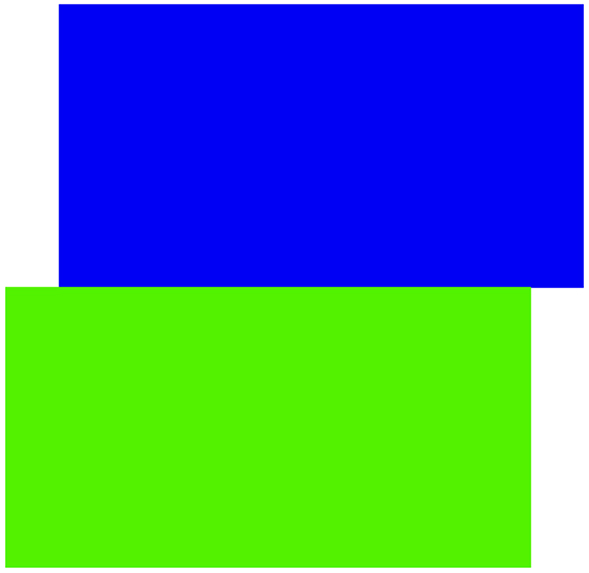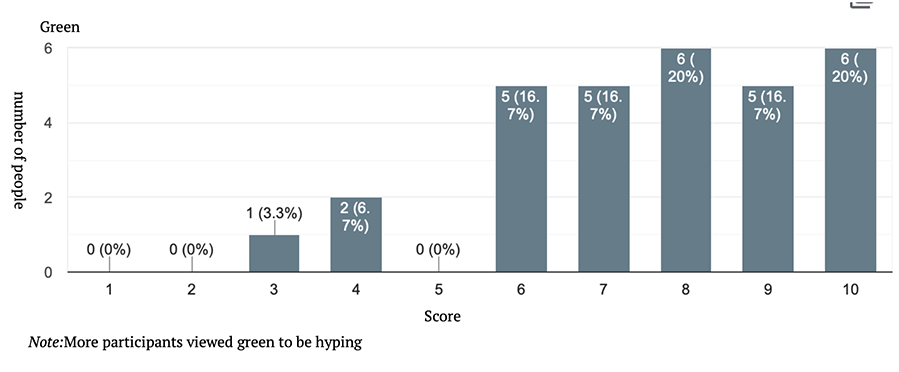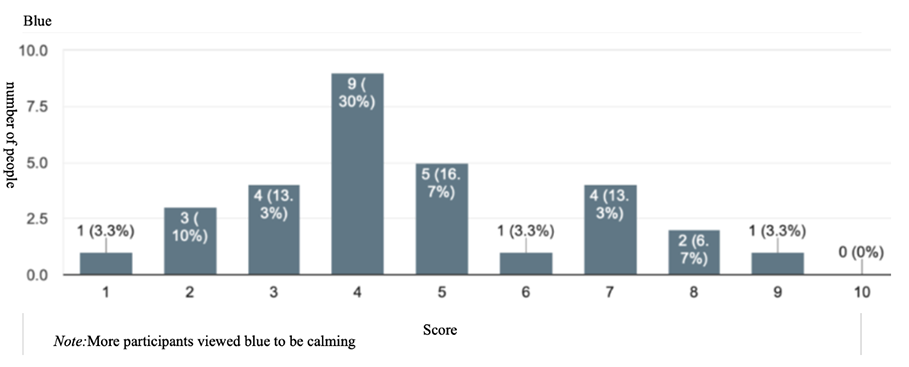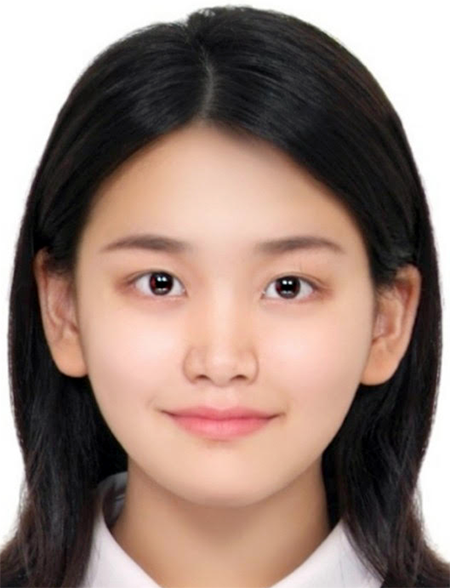Nowadays, it is widely believed that greenish-blue colors tend to be psychologically “calming” to people.Thus, many people paint their walls, work offices, or papers in green to calm themselves down and to find comfort. While it is impossible to measure the precise degree to which color impacts our mood, the strong power underneath the sensibility of colors is undeniable.
Calming or Hyping?

I wanted to prove if this widely-believed theory is valid. To browse over this theory, I started off by randomly recruiting 30 participants. I used my telephone directory, which listed names in an alphabetical order. The people who were chosen had an age range from 13 to 23 and included both females and males.
I used a platform called “Google Forms” to conduct this experiment. The survey presented the participants with various colors such as blue, red, yellow, orange, green, pink(magenta), white, brown, black, and gray. Then, the subjects were asked to bubble in their perceived emotional state about each color, without preference, on a scale of 1 to 10 (1 representing the most calming and 10 representing the most “hyped”).

I hypothesized that the warmer the color (red, orange, and yellow), the more “hyped” a person gets (with a score higher than 5); the cooler the color (blue, green, and light green, and purple), the calmer a person gets (with a score lower than 5); and finally, the neutral colors (black, gray, and shades of white) would not have strong effect on person’s mood (some with a score lower than 5 and some with a score higher than 5).

After gathering all the data results from the participants, I transformed my data into bar graphs. Overall, my hypothesis seemed to be somewhat valid. The bar graphs revealed that warm colors gave scores that were more skewed to the right side, while the bar graphs of neutral colors yielded scores that were more skewed to the left. With the majority of the scores on the right side, my results indicated that warmer colors have a stronger positive correlation with getting “hyped.” On the other hand, with the majority of scores on the left side, the neutral colors showed a stronger negative correlation with getting “calmed.” However, ironically, cool colors did not seem to have significant effects on a person's mood. The cool colors showed no correlation between calmness nor excitement, except for blue, which appeared to calm the subjects down.

Looking through my data, I found out that there was a possible fallacy in my study: the different levels of saturation. Caused by the different levels of saturation, the colors might have been too bright and strong or too dull and murky compared to the original colors that were supposed to be representing: since the study used light green, not natural green, it could have triggered the subject’s underlying “hypeness”.

I asked a psychiatrist Seung-Heon Chae, at Hugh Sungsim Hospital, if my research would have positive implications for the practice of Chromotherapy -- a treatment that uses a spectrum of colors with electromagnetic radiation to cure various diseases such as calming the nervous system, treating insomnia, schizophrenia, and other mental disorders. He notified me that, originally, achromatic colors or neutral colors might give different results depending on the brightness and saturation. He further added that colors with higher brightness and low saturation could give a soft feeling and a sense of stability, whereas colors with lower brightness and high saturation normally give stronger feel. Though it is a little cautious to speak assertively that certain colors convey a certain mood, discovering more about chromotherapy could help people psychologically.
Referring to the psychiatrist’s statements, I hope the therapists would have a better idea about the potential effectiveness of neutral colors. This research will remind them that not only do green or blue colors mentally heal people, but also the neutral colors (black, brown, gray, and white) could be successful colors when it comes to curing people.

Minjung Kwon
9th Grade
Seoul Scholars International

